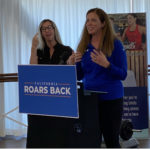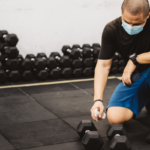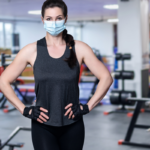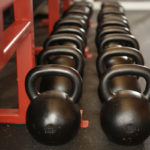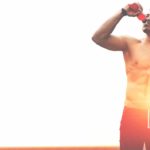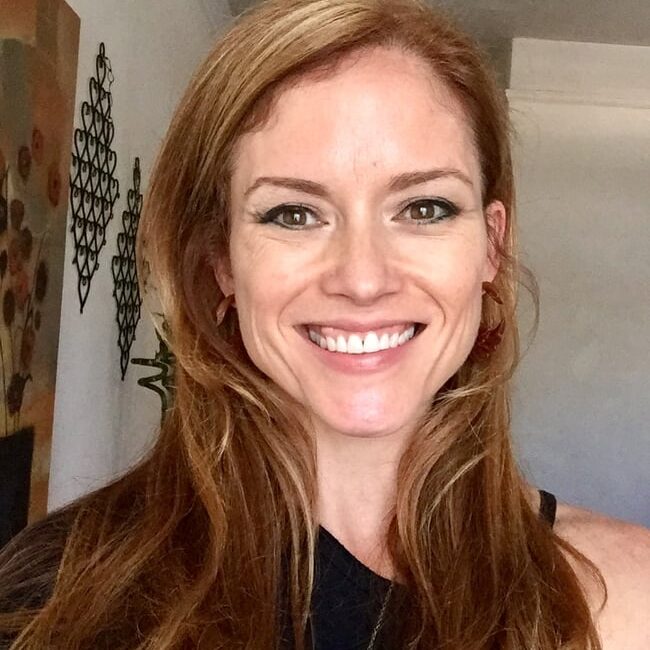
Joy Keller
Joy Keller
Article Archive
“Health is essential.” This was one of many key remarks made during a press conference to announce the re-opening of California fitness facilities.
Read MoreAre you ready to return to work? Don’t reopen without carefully considering the needs of your staff. They are your customers too!
Read MoreAre people ready to come out of hibernation and take their post-pandemic self-care to the next level? Yes, according to a recent survey.
Read MoreThe Cooper Institute now offers a free online tool for youth fitness, The FitnessGram Playground, to improve kids’ physical fitness and mental well-being.
Read MoreFor the first time in 38 years, the global fitness community that is the IDEA® World Convention was not able to meet in person. Despite that, the crackling energy and essential rite of gathering to share ideas and buoy each other breathed fresh air into the 8,000 attendees, sponsors and presenters who attended via the ether on August 21–22.
Read MoreAs a certified group fitness instructor, you know how essential a physical warmup is, but in today’s world—when digital distraction and the rigors of a stressful life tend to short-circuit the brain—there’s also a need to mentally connect attendees with the moment so they are fully present to receive your cues and guidance.
Read MoreWhat activities or equipment-based program trends are you seeing in the new year? Are you boosting promotion of any particular programs like high-intensity interval training, indoor cycling, yoga or barre? Or are you offering shorter class times or opportunities for virtual training? Please share your success stories.
Read MoreWhen the body’s systems are running smoothly, we’re a walking, talking cellular symphony. When something goes “off note,” we become more cognizant of how vital interconnections affect our functionality. More commonly, though, we take the actions of some body parts for granted. Consider, for example, the renal, or urinary, system.
Read Moredietary apps or food trackers to your clients?
Please share what apps you’re working with, whether you prefer one app or device to another, and any successes you’ve had with clients.
We want to hear from you! Email executive editor Joy Keller, jkeller@ideafit.com.
Read MoreAs “head coach” of the circulatory/cardiovascular system, the heart pumps blood throughout the body, supplying oxygen and nutrients to tissues. Actually, two circulatory systems work as a “team”: Systemic circulation carries oxygenated blood from the heart to the body and sends deoxygenated blood back to the heart. Pulmonary circulation transports oxygen-poor blood from the heart’s right ventricle to the lungs, where it picks up a new supply of oxygen-rich blood that it carries to the heart’s left atrium (PubMed Health 2018).
Read MoreWhen it comes to muscles, we rarely think about our eyes, and yet the eye is the fastest and most active muscle in the human body (VSP 2018). We say “in the blink of an eye” for a reason! While you probably don’t program “eye lifts” into your strength training routines, exercise does support healthy vision. Read on to find out more about the benefits, along with a few fun facts you can share with clients to further inspire them to keep moving.
Read MoreWhile life may not always be a highlight reel, thousands of the best personal trainers, group exercise instructors, fitness entrepreneurs and nutrition/wellness professionals added significant footage to their lives at this year’s IDEA World Convention, where everyday actions became epic adventures in education. At the 2018 event, held in San Diego, June 27–July 1, more than 14,000 like-minded pros converged to learn from more than 350 workshops and workouts taught by the industry’s keenest minds.
Read MoreWhen you’re designing a fitness program, you may or may not consider the endocrine system, and yet it’s a key component of wellness. A network of glands that secrete hormones to support bodily functions, the endocrine system regulates internal processes—including growth and development, metabolism, homeostasis, response to stimuli, and reproduction—via the bloodstream (Sargis 2016).
Read MoreLocated behind the stomach in the upper abdomen, the pancreas is a glandular organ that has two primary “jobs.” It is both a digestive exocrine gland (secreting products via ducts) and a hormone-producing endocrine gland (secreting substances directly into the bloodstream). The pancreas excretes enzymes to break down the foods we eat, and it secretes insulin and glucagon to control blood sugar (Taylor 2018). Spongy, and shaped like a flat pear, it’s about 6–10 inches long (Columbia University Medical Center 2018).
Read MoreYou may have noticed that many of your clients are blissfully unaware of just how much work the foot and ankle complex does—unless and until, of course, an ankle sprain or tendinitis occurs. The ankle “negotiates” ground reaction forces, informing the kinetic chain in numerous ways. Among other functions, the feet and ankles help the body adapt to uneven terrain through side-to-side movement (Price 2008).
Read MoreAny routine visit to the physician includes the familiar cold-hands-under-the-earlobes lymph node check. But how often do you think about what the doctor is checking for or how important the lymphatic system is? And have you told your clients that physical activity plays a key role in supporting this crucial system?
Read MoreThe posterior aspect of the body, along with its muscles, tendons, bones and attachments, is easy to overlook because it’s out of sight and, therefore, often out of mind. Until, that is, pain occurs. The ischial tuberosity—also known as the “sit bones” or even “sitz bones” (from the German word sitzen) (Garikiparithi 2017)—has many different connections, although it is mainly associated with the hamstring muscles (Drake et al. 2010).
Read MoreMany fitness professionals have dealt with an Achilles tendon injury, either their own or a client’s. The largest and strongest tendon in the body, the Achilles connects the lower-leg muscles and calf to the heel. “Synchronous functioning” of the tendon and calf is crucial for many activities, including standing on tiptoe, running, jumping and climbing stairs (Bhimji 2016).
Dutch surgeon Philip Verheyen named the tendon (after the Greek hero Achilles) in 1693. Previously, it was known as “tendo magnus of Hippocrates” (van Dijk 2011).
Does the pelvic floor get the props it deserves? Many fitness professionals who specialize in women’s health think it warrants more respect and attention. Trista Zinn, founder of Hypopressives in Toronto, says the pelvic floor is “overlooked and misunderstood by many.” She adds, “Our quality of life and athletic performance literally rest on [the pelvic floor’s] synergistic ability to function with the core as a whole.”
Read MoreSome anatomy geeks get a kick out of asking unsuspecting people to name the largest system or external organ in the body. The answer: The integumentary system, of course, which includes the skin, hair, nails, and sebaceous and sweat glands (Springhouse 2002). Its main function is to protect the body from “the outside world” (bacteria, for example), but it also eliminates waste products, regulates body temperature and retains body fluids (AAAS 2017).
Read More